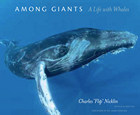Echolocation in Bats and Dolphins
University of Chicago Press, 2003
Cloth: 978-0-226-79598-0 | Paper: 978-0-226-79599-7
Library of Congress Classification QL737.C5E28 2004
Dewey Decimal Classification 573.8719
Cloth: 978-0-226-79598-0 | Paper: 978-0-226-79599-7
Library of Congress Classification QL737.C5E28 2004
Dewey Decimal Classification 573.8719
ABOUT THIS BOOK | AUTHOR BIOGRAPHY | REVIEWS | TOC
ABOUT THIS BOOK
Although bats and dolphins live in very different environments, are vastly different in size, and hunt different kinds of prey, both groups have evolved similar sonar systems, known as echolocation, to locate food and navigate the skies and seas. While much research has been conducted over the past thirty years on echolocation in bats and dolphins, this volume is the first to compare what is known about echolocation in each group, to point out what information is missing, and to identify future areas of research.
Echolocation in Bats and Dolphins consists of six sections: mechanisms of echolocation signal production; the anatomy and physiology of signal reception and interpretation; performance and cognition; ecological and evolutionary aspects of echolocation mammals; theoretical and methodological topics; and possible echolocation capabilities in other mammals, including shrews, seals, and baleen whales. Animal behaviorists, ecologists, physiologists, and both scientists and engineers who work in the field of bioacoustics will benefit from this book.
Echolocation in Bats and Dolphins consists of six sections: mechanisms of echolocation signal production; the anatomy and physiology of signal reception and interpretation; performance and cognition; ecological and evolutionary aspects of echolocation mammals; theoretical and methodological topics; and possible echolocation capabilities in other mammals, including shrews, seals, and baleen whales. Animal behaviorists, ecologists, physiologists, and both scientists and engineers who work in the field of bioacoustics will benefit from this book.
See other books on: Bats | Dolphins | Echolocation (Physiology) | Mammals | Physiology
See other titles from University of Chicago Press






























